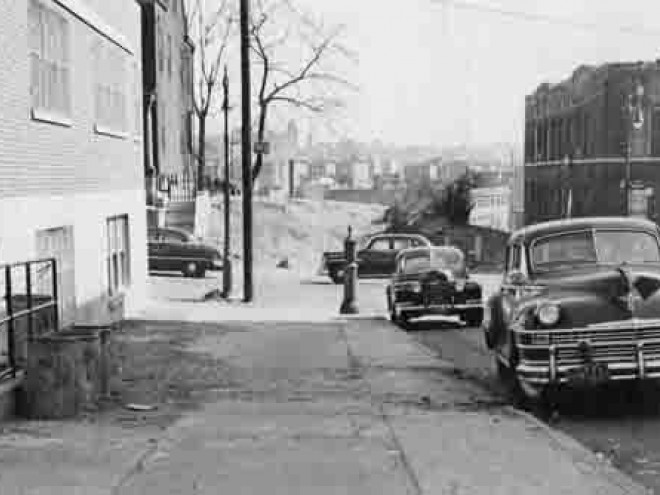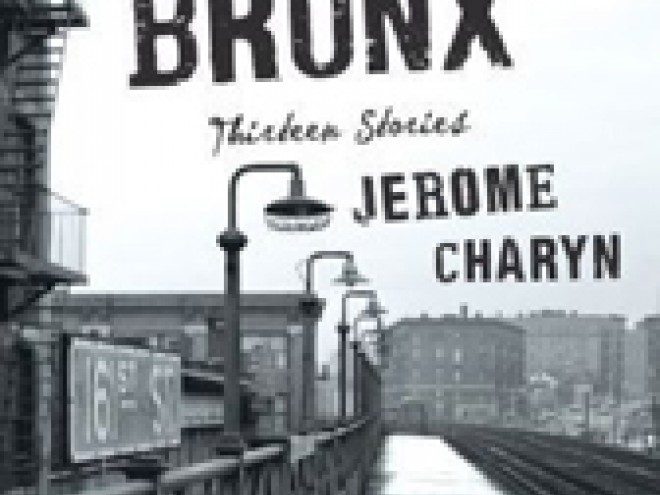Earlier this week, Jerome Charyn wrote about New York as a crime novel and growing up Jewish in the Bronx. He is the author of the recently published short story collection Bitter Bronx and has been blogging here all week for Jewish Book Council’s Visiting Scribe series.
 Whenever I feel “a damp, drizzly November in my soul,” I don’t go out to sea, like Herman Melville. I go back to the Bronx. It wasn’t always that way. For a long time I avoided every trace of the Bronx, disturbed by its random chaos — drug lords shooting at one another from the roofs of the Grand Concourse while half the borough was on fire.
Whenever I feel “a damp, drizzly November in my soul,” I don’t go out to sea, like Herman Melville. I go back to the Bronx. It wasn’t always that way. For a long time I avoided every trace of the Bronx, disturbed by its random chaos — drug lords shooting at one another from the roofs of the Grand Concourse while half the borough was on fire.
And then I did go back. The BBC was shooting a documentary on the Bronx. It must have seemed like an ideal movie set to the British, all that rubble reminding them of the London Blitz, and they wanted a novelist from the Bronx to accompany them. We roamed the badlands, and I felt a kind of delicious vertigo, as I realized that I had been shaped as a writer by that little paradise of ruin. I’d filled the void with my own imagination.
And now, when I stand on the corner of Sheridan Avenue and East 169th Street, a valley with hills on three sides, I feel like an explorer reinventing the sinews of his own past. I can still see the “crown” of the George Washington Bridge rising above the Grand Concourse like some magical moonscape. The apartment house where I had lived during World War II — a deluxe tenement one block east of the Concourse — is all gated up like a fortress, with a bold sign above the doorway: TRESPASSERS BEWARE!
Perhaps I am a trespasser now. I move on. I arrive at an abandoned lot on Marcy Place, where I encounter a wondrous form of cave art — a mural in brilliant color that covers the exposed side wall of another deluxe tenement, right near the lot. The mural depicts a Bronx garden with some tenement palaces in the distance. The garden is equipped with three multicolored cats, two musicians, a flowerpot, three birds and their birdbath, a kind of urban cactus tree that looks like a surreal ladder, several dogs, and a young girl in a yellow dress, sitting in the lower left corner of the mural, as a queen might sit, glancing at her own creation. The drizzly November in my soul has disappeared while I glance as the surety of that design on the wall. The muralist, Tova Snyder, who was raised in Israel and Provincetown, has imagined her very own Alhambra in the heartland of the Bronx.
I walk one block west to the Concourse, once a middleclass Jewish mecca, and now a maze of pawnshops, dental offices, and beauty salons, with the same Art Deco imprint of its apartment houses that had enthralled me as a little boy. I arrive at the Concourse Plaza. Sixty years ago it was the borough’s classiest hotel, where a number of Bronx Bombers used to live during the baseball season. Now it’s a center for seniors, with a guard sitting in a cage inside the front door. He scowls at me, trying to establish his own sense of order. Smile, I want to say — laugh a little. Whatever music I have inside my skull has risen from the bedlam of the Bronx. I could be one of the creatures in that mural on Marcy Place. A musician perhaps, or a multicolored cat.
Jerome Charyn’s stories have appeared in The Atlantic, Paris Review, American Scholar, Epoch, Narrative, Ellery Queen, and other magazines. His most recent books include Bitter Bronx and I Am Abraham. He lived for many years in Paris and currently resides in Manhattan. Read more about him here.
Related Content:
Jerome Charyn is the author of more than fifty works of fiction and nonfiction, including Ravage & Son; Sergeant Salinger; Cesare: A Novel of War-Torn Berlin; In the Shadow of King Saul: Essays on Silence and Song; Jerzy: A Novel; and A Loaded Gun: Emily Dickinson for the 21st Century. Among other honors, his work has been longlisted for the PEN Award for Biography, shortlisted for the Phi Beta Kappa Christian Gauss Award, and selected as a finalist for the Firecracker Award and PEN/Faulkner Award for Fiction. Charyn has also been named a Commander of Arts and Letters by the French Minister of Culture and received a Guggenheim Fellowship and the Rosenthal Family Foundation Award for Fiction from the American Academy of Arts and Letters. He lives in New York.



